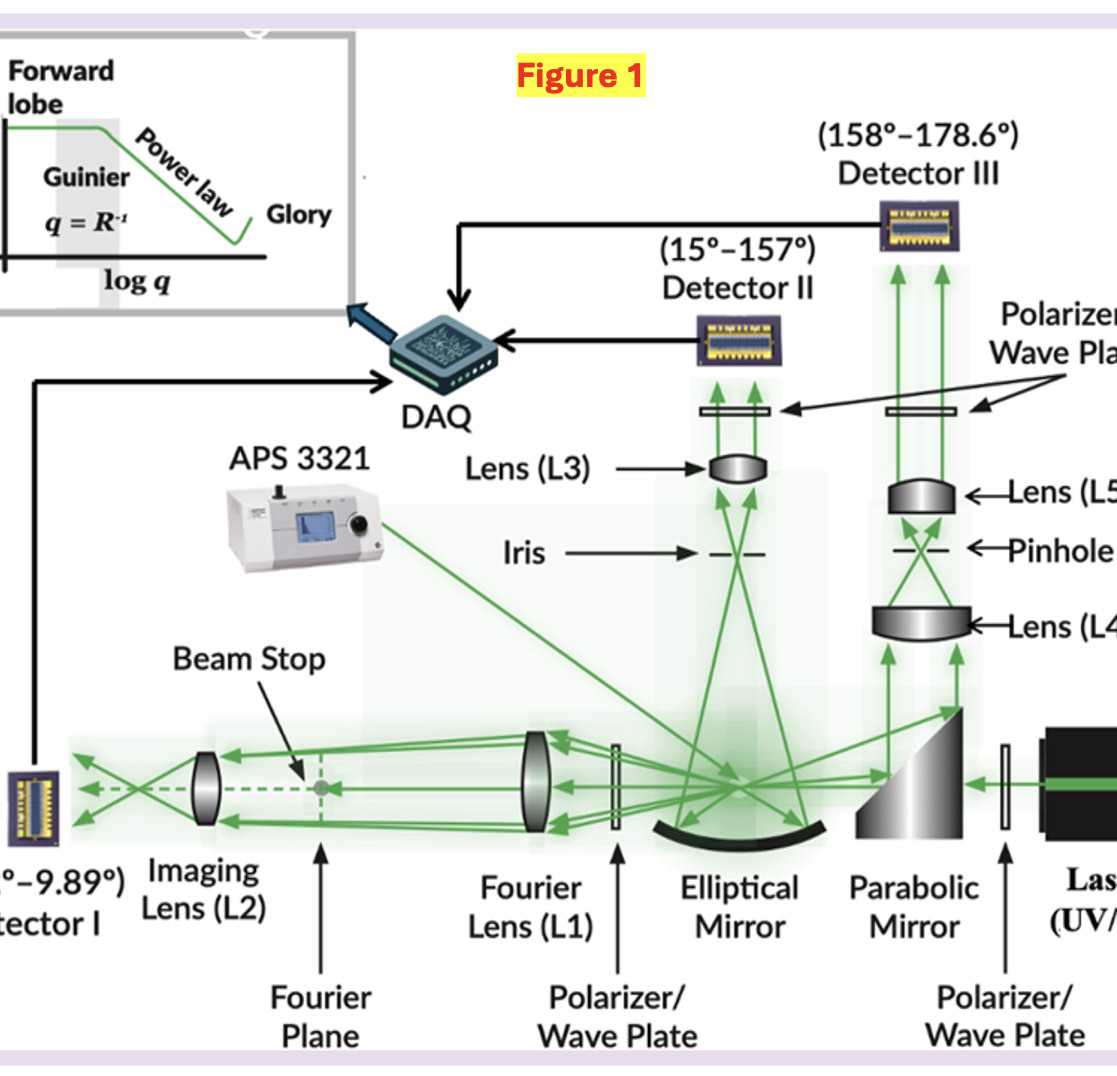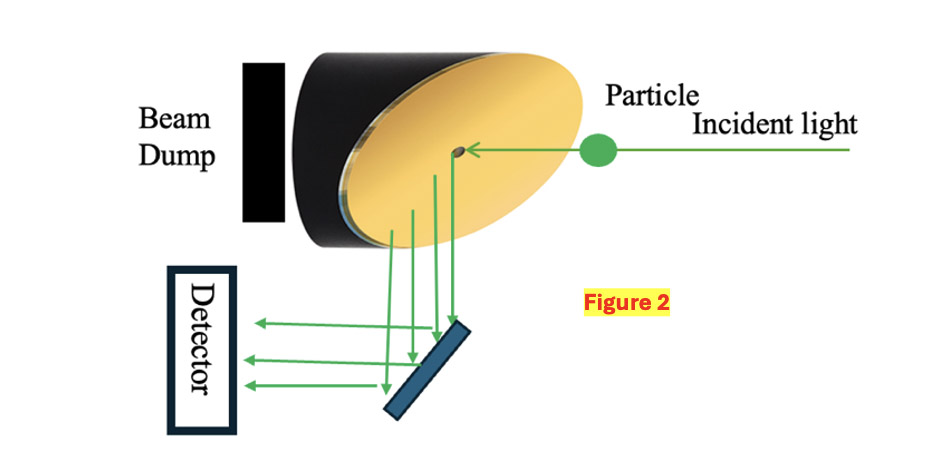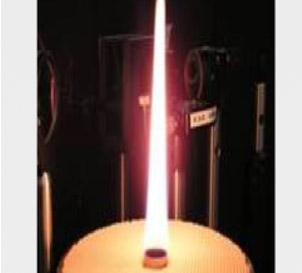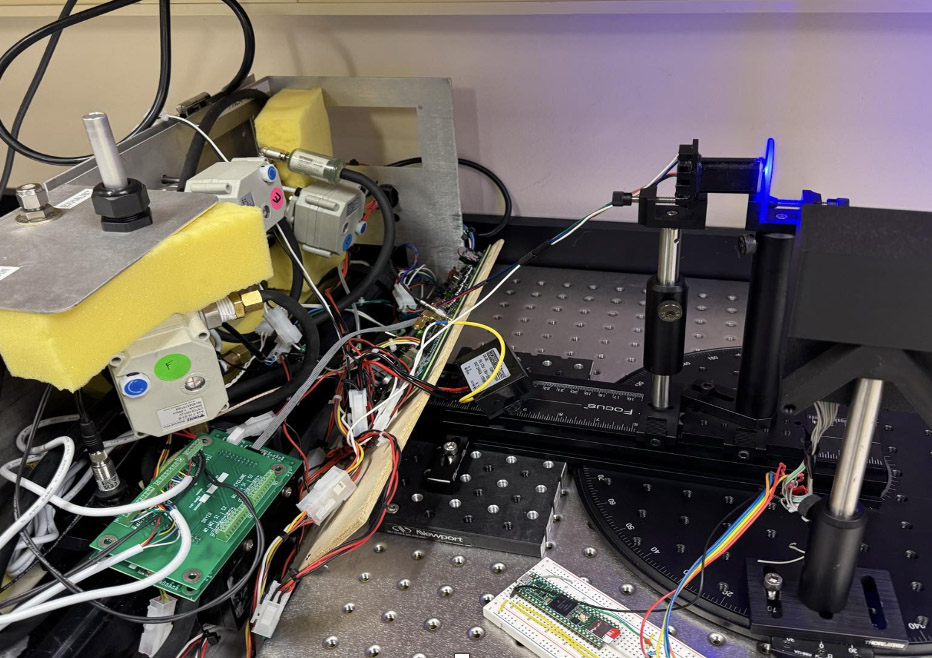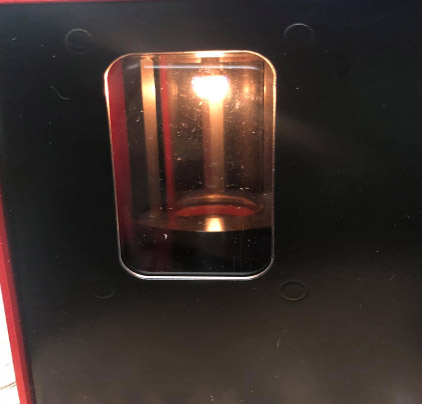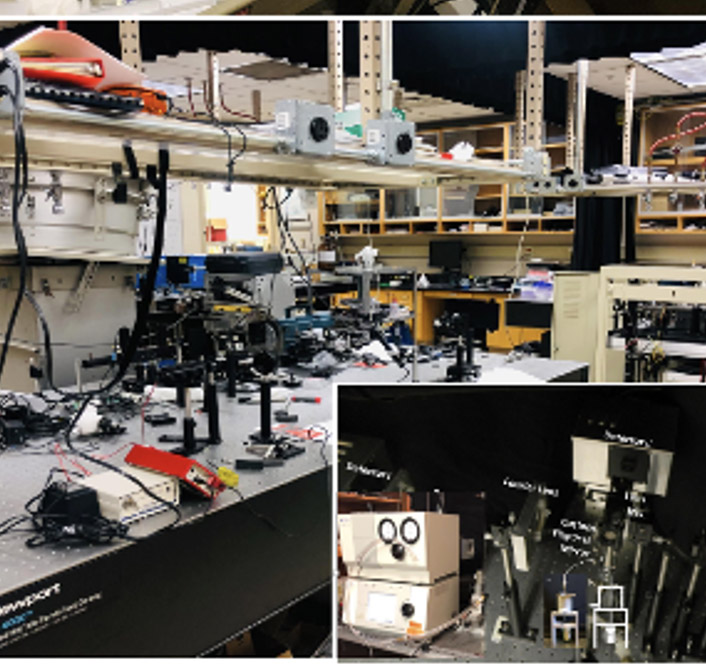Gautam Laboratory for Advanced Aerosol Dynamics
and Light Scattering Research
785.317.7470
RESEARCH AREAS
Dr. Gautam’s research focuses on understanding the complex interactions between aerosol particles and light. The study uses advanced light scattering techniques to characterize the optical properties of different aerosol types. This research aims to push the boundaries of aerosol characterization, advancing both the technology used for monitoring and the understanding of aerosol particle behavior. Research focuses on the following areas:
1. Unified Approach to Characterizing Optical and Microphysical Properties of Particles in Colloidal and Free-Flowing Systems
Our research focuses on advancing the characterization of aerosol particles using recently developed optical setup. This setup measures scattered light from very small forward scattering angles (0.32°) to near the exact backscattering angle (178.6°) across 64 different angles, simultaneously. Building on techniques developed during my Ph.D. research, this setup features an enhanced detector array with more channels, allowing for improved angular resolution of scattered light. By using three multichannel photomultiplier tube (PMT) detectors, we can simultaneously measure scattering data for individual particles and particle ensembles, providing a comprehensive understanding of aerosol particle properties.
Analysis Methods: We employ a unique analysis method: application of Q-space and Θ-space analysis simultaneously, to analyze wide-angle light scattering data. Q-space analysis examines the scattered intensity as a function of the scattering wave vector magnitude, providing valuable insights into irregular particle shapes and configurations. This approach allows us to identify patterns that were previously difficult to quantify, offering unprecedented accuracy in characterizing scattering. By combining this with traditional Θ-space analysis, we can determine the shape, size, and complex refractive index (composition) of particles. Additionally, we utilize a range of complementary microphysical characterization techniques, including X-ray diffraction (XRD), optical microscopy, Transmission Electron Microscopy (TEM), Scanning Electron Microscopy (SEM), Ultra-Small Angle X-ray Scattering (USAXS), Aerodynamic Particle Sizer (APS), and Optical Particle Sizer (OPS). By comparing data from these methods, we can refine measurement accuracy and reduce uncertainty, ultimately improving aerosol monitoring and characterization.
Addressing Uncertainty in Remote Sensing: Remote sensing technologies, such as satellite, aircraft, drone, and ground-based instruments, face significant uncertainty when retrieving information about aerosol particles. This uncertainty arises from the reliance on backscattered light, which is highly sensitive to a particle’s microphysical properties (e.g., shape, size, refractive index). Understanding these optical properties, especially within the backscattering regime, is critical for accurate interpretation. By simultaneously measuring optical and microphysical properties, we aim to provide a coherent and comprehensive understanding of backscattering from aerosol particles. Our research seeks to reduce these uncertainties and enhance the precision of remote sensing for particulate matter.
Forward Scattering-Based Particulate Matter Sensor Development: We are also working on the development of an ambient particulate matter sensor that leverages forward scattering measurements. Forward scattering is less sensitive to particle microphysical properties (like shape, size, and refractive index) compared to side scattering, which is commonly used in existing particulate matter sensors. Side scattering introduces significant uncertainty when converting intensity data into accurate particle characteristics. By focusing on forward scattering, we aim to develop more robust and reliable sensors with broader applications across various fields, benefiting from recent advances in laser and optics technology.
Backscattering-Based Aerosol Lidar Development: Our research extends to the development of lidar-based monitoring systems for particulate matter, particularly in the backscattering regime. Lidar-based techniques for aerosol monitoring are rare and often costly, but our angularly resolved light scattering setup enables us to measure scattered light from 157° to 179°. We plan to apply Q-space analysis to the backscattering data to generate coherent, explainable patterns related to particle size and properties, even though Q-space with phase angle analysis isn’t theoretically correct 😊 ! This approach will improve our understanding of particle irregularity and refractive index based on backscattering data, with potential applications in remote particulate matter monitoring, including bioaerosols. These developments have important implications for defense applications, where bioaerosol monitoring is a key concern.
2. Holography and Advanced Particle Monitoring Techniques
Our research focuses on enhancing holography as a powerful tool for recording and reconstructing three-dimensional images. By capturing both intensity and phase information of light scattered from objects, holography enables detailed analysis and visualization of a wide variety of materials and phenomena. Digital holography, which uses digital cameras such as CCD or CMOS sensors to capture interference patterns, is central to our work. We are working to improve holography technology by integrating novel techniques, optics, and lasers, with a specific focus on incorporating artificial intelligence (AI) and machine learning (ML) to optimize the process. A key aspect of our current research involves combining in-line holography with forward static light scattering techniques to develop a new hybrid instrument. While holography excels at monitoring larger particles, static light scattering is better suited for sub-micron particles. By merging these approaches, we aim to create an instrument with a wider size range for particle monitoring compared to existing light-scattering devices. This innovation will lead to more accurate measurements of particle shape (3-D), size, and concentration. With advancements in optics and detector technology, both in terms of cost and sensitivity, there are significant opportunities to develop improved holography techniques. These advancements will enable more precise aerosol characterization, with applications in atmospheric research and other fields.
3. Characterization and Kinetics of Colloidal Sol-to-Gel Transition
We are working on combining dynamic light scattering (DLS), small-angle static light scattering (SASLS), and transmittance measurements to investigate the kinetics of the colloidal sol-to-gel transition. This approach provides detailed insights into the process as it progresses from sol to percolated gel. Colloids, which are dispersions of small particles (typically sub-micron in size) in a fluid medium, include common substances like milk, ink, paint, and smoke. Colloids have unique properties that make them valuable for numerous technological applications. Their small size allows them to be highly influenced by thermal energy, and their particle interactions can be precisely controlled in laboratory settings, facilitating their assembly into new materials. These monomers, or primary particles, are the building blocks for developing innovative materials and technologies. Aerosols, which are tiny particles suspended in the atmosphere, share many characteristics with colloidal systems. Understanding the interactions within these systems such as aggregation, coagulation, and dispersion-is critical for studying aerosol dynamics. This knowledge is essential for understanding how particles evolve in size, interact, and contribute to atmospheric phenomena like cloud formation and air quality.
4. Upgrading and Optimizing Aerosol Monitoring Instruments for Enhanced Ambient Aerosol Characterization
Our research also focuses on upgrading aerosol monitoring instruments to improve the characterization of ambient aerosol particles. We aim to enhance optical instruments, like nephelometers, which are commonly used to measure aerosol properties such as concentration, size distribution, and optical characteristics. However, current nephelometers have limitations, particularly in measuring critical forward scattering angles and backscattering. To overcome these challenges, we are developing an angularly resolved light scattering setup, capable of measuring a wide range of scattering angles. This advanced instrument will provide more accurate data on aerosol particles’ optical and microphysical properties, enhancing our ability to monitor ambient aerosols.
5. Development of State-of-the-Art Instruments Based on Novel Optical Approaches
Our group develops innovative optical tools to enable precise characterization of aerosols, colloids, and complex environmental systems. We employ state-of-the-art methods including multi-angle static scattering, holography, and fluorescence spectroscopy enhanced by machine learning algorithms. These instruments are optimized for both lab research and fieldwork, delivering real-time, high-sensitivity data in compact, adaptable formats. Our group is collaborating with small businesses through the STTR and SBIR programs to develop and commercialize advanced optical instruments.

- While Einstein’s theory of relativity is often presented as a completely novel idea, it was actually an assembly of different ideas that were already present in physics, but he combined them in a groundbreaking way by introducing radical new concepts like the constancy of the speed of light and the relative nature of time and space, allowing him to draw revolutionary conclusions that previous scientists had missed; essentially, he took existing pieces and created a new, unified picture through his unique perspective and thought experiments
- An ounce of action is worth a ton of theory – Ralph Waldo Emerson
